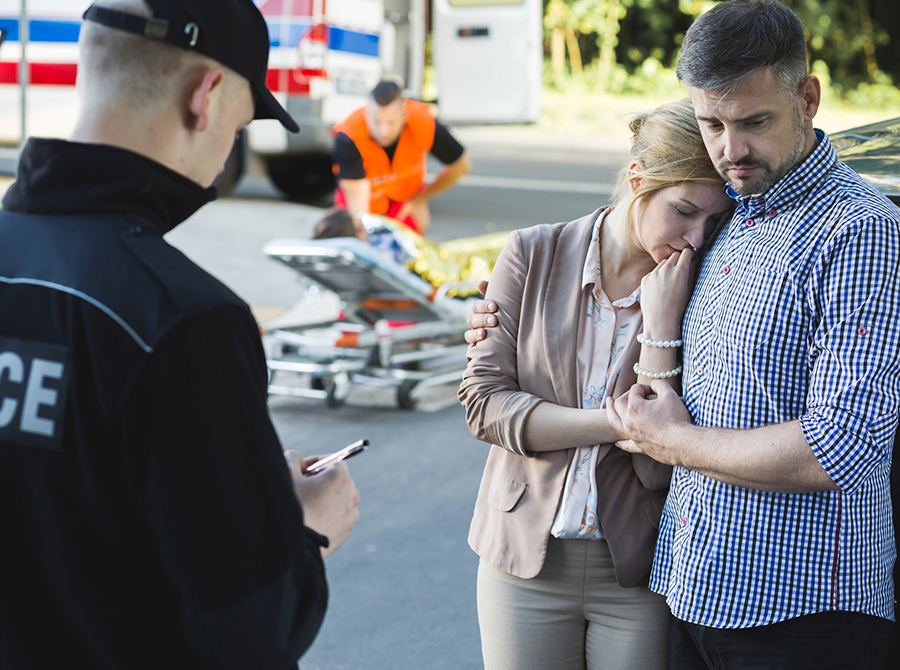The purpose of de-escalation is to bring chaotic situations to as peaceful a resolution as possible, without increasing the risk of harm to anyone. De-escalation techniques are useful for law enforcement officers to:
- Help keep a calm individual from becoming agitated during a police encounter.
- Help keep an individual who is already agitated from becoming violent during a police encounter.
- Help bring an individual who is already agitated back down to a calmer emotional state where he or she is more rational.
De-escalation includes communication, critical thinking, incident resolution, and officer discretion.
There are many verbal and physical de-escalation techniques. Police officers must use their judgment in determining whether to use a particular technique during an incident—not all techniques are appropriate in all situations. Safety is the most important consideration: safety of the suspect or individual, safety of the surrounding civilians, and safety of every responding law enforcement officer. While using de-escalation techniques, officers must remain vigilant for changing circumstances and be prepared to take appropriate action.
The following sample of verbal techniques may be used when, considering all the circumstances, they will not compromise safety. Verbal de-escalation techniques include:
- Choose a “voice.” A person who is escalating can be easily confused when more than one person is speaking to him or her. So, when multiple police officers respond to a scene, choose one officer to be the “voice.” This is typically the officer who has “beat responsibility” for the location of the incident. Alternatively, an experienced veteran officer can be the “voice.” Other officers should keep watch on the entire scene, be ready to communicate with additional responders and support persons, relay new information to the speaking officer, and be ready to take over at a moment’s notice if the speaking officer needs a break.
- Monitor your tone. Speak at a volume that is clear but lower than that of the individual. This subconsciously causes the individual to want to match your volume. It may take four or five exchanges, but most individuals will lower their volume to match yours.
- Use a slower rate of speech. Speak at a slightly slower than normal rate of speech. When under a fight or flight response, it takes longer for an individual to comprehend your verbal speech. Slower speech may also be calming to the individual. However, do not speak excessively slowly because this can give the appearance that you either lack confidence or are being condescending.
- Use the initial contact to diffuse an individual’s “worst-case-scenario thinking” by following these steps:
- Provide a greeting that includes your name and agency. For example: “Good afternoon. I’m Officer Smith with the Riverfield Police Department.”
- Explain the purpose of the interaction. For example: “I’m here because this address was listed as the residence of a person who is suspected of being involved in a parental kidnapping situation.”
- Ask the pertinent question. The pertinent question usually involves making a request for information the law enforcement officer needs or asking the person to take a relevant action. For example, when looking for a suspect, the pertinent question might be, “Does Amy Smith live here?” When making the initial contact with a driver in a traffic stop, the pertinent question might be, “May I see your driver’s license and registration?”
By clearly and quickly giving the person a polite greeting, identifying yourself by name and source of authority, explaining the reason for the contact, and asking the person to respond, you answer the initial questions the person most likely has, get the person focused on the substance of the interaction (instead of imagining worst case scenarios), and show respect by not leaving the person in suspense about the nature of the contact. This introduction also gives the person an opportunity to talk early in the contact, which helps establish rapport.
Check out our 2025 Online Police De-escalation training here https://policelegalsciences.com/missouri-2023-2024-lesson-summaries/ and here https://policelegalsciences.com/iowa-lesson-summaries-2023-2024/
Interested in learning more?
PLS offers police online training on a wide variety of practical issues to help law enforcement officers make good decisions in challenging situations. Link: https://www.policelegalsciences.com/


